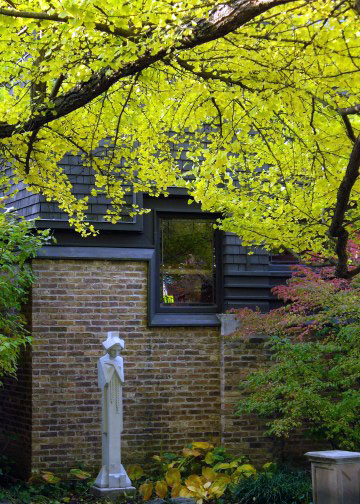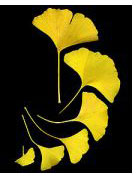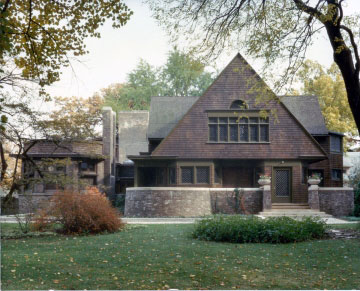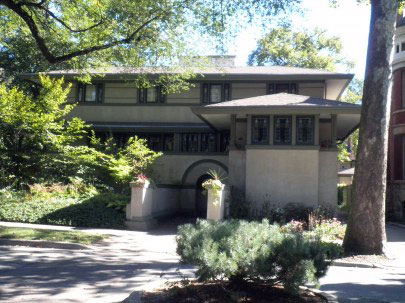
Until it gave up in 1992, there was a ginkgo tree in front of Frank Lloyd Wright’s first home in Oak Park, Illinois. The one pictured above still thrives behind the home and to the side of the studio addition. The historic site book shop is named for it.
At first sight, Wright had been attracted to that lot on the corner of Chicago and Forest streets which was owned and profusely planted with native and exotic species by Scottish landscaper John Blair. “I remember well that I came to Oak Park to live for no other reason than… the remarkable character of the foliage on the old Blair lot.”
A few days ago while watching the gingko in our backyard drop nearly all of the green jewels of its crown in the span of just a few hours, I began to wonder what role the gingko might have played in the evolution of Wright’s Prairie Style. They are beautiful, but idiosyncratic, and though once widespread, the extant species has not naturally existed outside a small part of China since the Pliocene.
They stand out. They look like their progenitor must have been an initial sincere attempt at arboreal architecture by a divine novice – one with only a schematic set of instructions from his/her master. The branches all stick out and up from the trunk in a more or less regular fashion and at a more or less 45 degree angle. Though plentiful, they are too brittle to make for good climbing. (Look at ours and you’ll see how I figured that out.)
They are dioecious, which means there are separate male and female plants. A seed is an inch or so long, light yellow-brown, soft and stinks. Smells so bad, in fact, that upon the odiferous encounter many look about and step with care thereafter.

The steep gables of the Platonic triangular west façade of the Wright home vaguely parallel the gingko vectors. The lines of Wright homes 1895–1898 do to a lesser degree. The lines of his studio, built in 1898 do not at all, nor does any part of the Prairie aesthetic.
It’s probably my over-active imagination again, but I wonder if at some point in the mid-1890s the alien acute angularity and proclivities of the gingko catalyzed the transmutation of shapes and shadows of local species into the leitmotif of his Prairie Style. Hmmm…
++++++++++++++++

*Wright’s home was designed in 1889. The Frank Thomas home (above) just a block down Forest Ave was built in 1901.
Budge Gierke is a self-described "58-year-old dude out here in Iowa just staring off into space – trying to figure out what came before the big bang. Once done with that, I’ll offer up some of my spot-on fashion tips for which my wife and three kids (25,28,30) are always so grateful."







